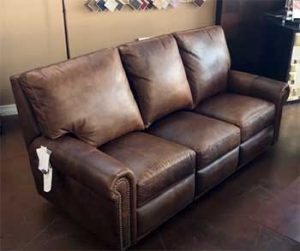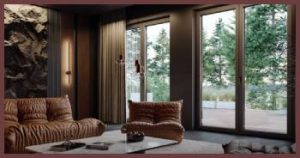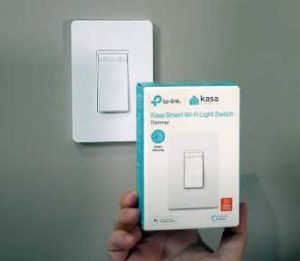In the ever-evolving world of bathroom design and remodeling, two standout materials have emerged as popular choices for shower walls – Sentrel and FlexStone.
To help you make an informed decision, we’ll dive deep into these two remarkable materials, explore their pros and cons, and address some frequently asked questions.
A Brief Comparison Table
| Sentrel | FlexStone | |
| Materials | High-resolution digital image of natural stone, protective coating, water-resistant substrate | High-resolution digital image of natural stone, polyurea layer, high-density polyurethane |
| Aesthetics | Mimics natural stone like granite, marble, travertine | Mimics natural stone textures |
| Durability | Resistant to mildew, mold, impact damage | Resistant to cracks, peeling, fading |
| Flexibility | Limited flexibility, can be custom fit to any space | Highly flexible, can be easily customized to fit any space |
| Installation | Easy, lightweight panels | Requires professional installation |
| Price | Premium product, higher price | High-end product, less expensive than Sentrel but pricier than traditional materials |
| Maintenance | Easy to clean, resistant to common bathroom issues | Easy to clean, resistant to common bathroom issues |
| Expected Lifespan | Can last for 20 years or more with proper care | Can last for 20 years or more with proper care |
This table provides a clear comparison between Sentrel and FlexStone, considering the key aspects you’d want to look into before making your decision.
Sentrel: An Elegant Solution for Bathroom Refinements
Sentrel is a premium product with a sophisticated design that mimics natural stone. This material, which is a composite blend of layers, brings durability, versatility, and a sense of luxury to any bathroom.
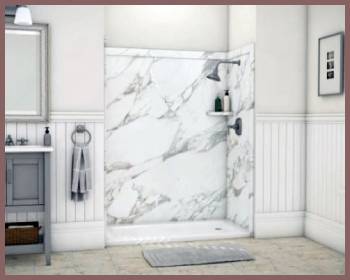
Pros of Sentrel
- Stunning Aesthetics
Sentrel comes in an array of shades and finishes, replicating the look of natural stones like granite, marble, and travertine, infusing your bathroom with a touch of elegance.
- Durability
Engineered with advanced technology, Sentrel is resistant to mildew, mold, and impact damage, ensuring longevity and ease of maintenance.
Easy Installation
Sentrel panels are lightweight, making them easy to handle and install, reducing installation time and labor costs.
Cons of Sentrel
- Pricey Option
Sentrel is considered a premium product and might not fit into every budget.
- Limited Flexibility
Although Sentrel can be custom fit to any space, it’s less flexible than some other materials, making it a less suitable choice for irregularly shaped shower areas.
Read More: About Pompeii Quartz
FlexStone: A Blend of Style and Strength
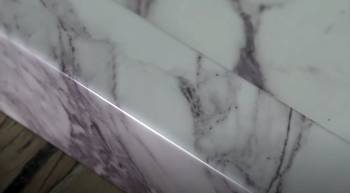
FlexStone, true to its name, offers flexibility and strength. This composite material, boasting the authentic look and texture of natural stone, is designed for high durability and easy maintenance.
Pros of FlexStone
- Authentic Look
FlexStone imitates natural stone textures with stunning accuracy, offering a variety of styles to match any bathroom decor.
- Flexibility
FlexStone is extremely adaptable, and can be easily customized to fit any shower space, even those with unconventional shapes.
- Resilience
The material is resistant to cracks, peeling, and fading, ensuring that your shower stays looking great for years to come.
Cons of FlexStone
- Requires Professional Installation
While FlexStone offers great flexibility, it requires professional installation to ensure proper adhesion and fit.
- Price
Though less expensive than Sentrel, FlexStone is still a higher-priced option compared to traditional tile or acrylic.
FAQs about Sentrel and FlexStone
As we conclude our comparison, let’s answer some of the most frequently asked questions about these two materials.
Sentrel shower walls are made from a composite material that consists of a high-resolution digital image of natural stone, sandwiched between two layers of clear, protective coating, all backed by a non-porous, water-resistant substrate.
With proper care and maintenance, FlexStone can last for 20 years or more. Its strong resistance to fading, peeling, and cracking adds to its longevity.
FlexStone is made of a high-resolution, digitally printed image of natural stone, embedded in a clear, protective polyurea layer, and backed by high-density polyurethane, making it durable and flexible.
FlexStone is primarily used for bathroom applications, such as shower walls and tub surrounds. Its flexibility, durability, and stylish design make it a popular choice for these applications.
Sentrel is known for its longevity. With proper care, it can last for 20 years or more, thanks to its resistance to impacts, scratches, and moisture-related issues such as mildew and mold.
While not the focus of this article, it’s worth mentioning LuxStone, another popular shower wall material. LuxStone shower walls are made from crushed marble and are bonded with high-strength resins, creating a durable surface that beautifully mimics the look of natural stone.
Read More: About Allen Roth Quartz
Sentrel vs FlexStone: Making The Choice
In conclusion, both Sentrel and FlexStone offer unique advantages, lending a sophisticated aesthetic to your bathroom while promising durability and easy maintenance. Your final decision will likely depend on your personal taste, bathroom layout, and budget.
Sentrel is a top-tier choice for those seeking a luxurious look, whereas FlexStone offers more flexibility in design and might be a better fit for unconventional spaces. Both products, however, come with a higher price tag compared to traditional shower materials.
Before making a decision, consider your long-term needs and consult with a professional to understand the installation process, maintenance requirements, and warranty information. Whichever material you choose, Sentrel or FlexStone, you’re investing in a product that will not only enhance the look of your bathroom but will also stand the test of time.
Final Words
So, step into the future of bathroom design with confidence, knowing you’re making an informed choice between two of the best shower wall materials on the market – Sentrel and FlexStone.

